I have a boolean matrix:
mm <- structure(c(TRUE, TRUE, TRUE, FALSE, TRUE, FALSE, TRUE, FALSE,
FALSE, FALSE, TRUE, TRUE, TRUE, TRUE, TRUE, FALSE, FALSE, TRUE,
FALSE, FALSE, FALSE, TRUE, TRUE, TRUE, TRUE, FALSE, FALSE, FALSE,
FALSE, FALSE, TRUE, TRUE, TRUE, TRUE, TRUE, FALSE, FALSE, FALSE,
FALSE, FALSE, TRUE, TRUE, TRUE, TRUE, TRUE, FALSE, FALSE, FALSE,
FALSE, FALSE, FALSE, FALSE, FALSE, FALSE, FALSE, TRUE, TRUE,
TRUE, TRUE, TRUE, FALSE, FALSE, FALSE, FALSE, FALSE, TRUE, TRUE,
TRUE, TRUE, FALSE, TRUE, FALSE, FALSE, FALSE, FALSE, TRUE, TRUE,
TRUE, TRUE, TRUE, FALSE, FALSE, FALSE, FALSE, FALSE, TRUE, TRUE,
TRUE, TRUE, TRUE, FALSE, FALSE, FALSE, FALSE, FALSE, TRUE, TRUE,
TRUE, TRUE, TRUE), .Dim = c(10L, 10L), .Dimnames = list(NULL,
c("n1", "n2", "n3", "n4", "n5", "n1.1", "n2.1", "n3.1", "n4.1",
"n5.1")))
For this matrix, I'd like to make a plot similar to this one:
(the picture was taken from a similar question for Matlab: How can I display a 2D binary matrix as a black & white plot?)
Maybe I'm missing something obvious, but I don't see an easy way how to do that in R. So far, my best attempt is based on barplot:
m1 <- matrix(TRUE,ncol=10,nrow=10)
barplot(m1,col=mm)
but it makes all rows have the same colors.
Any ideas are welcome

